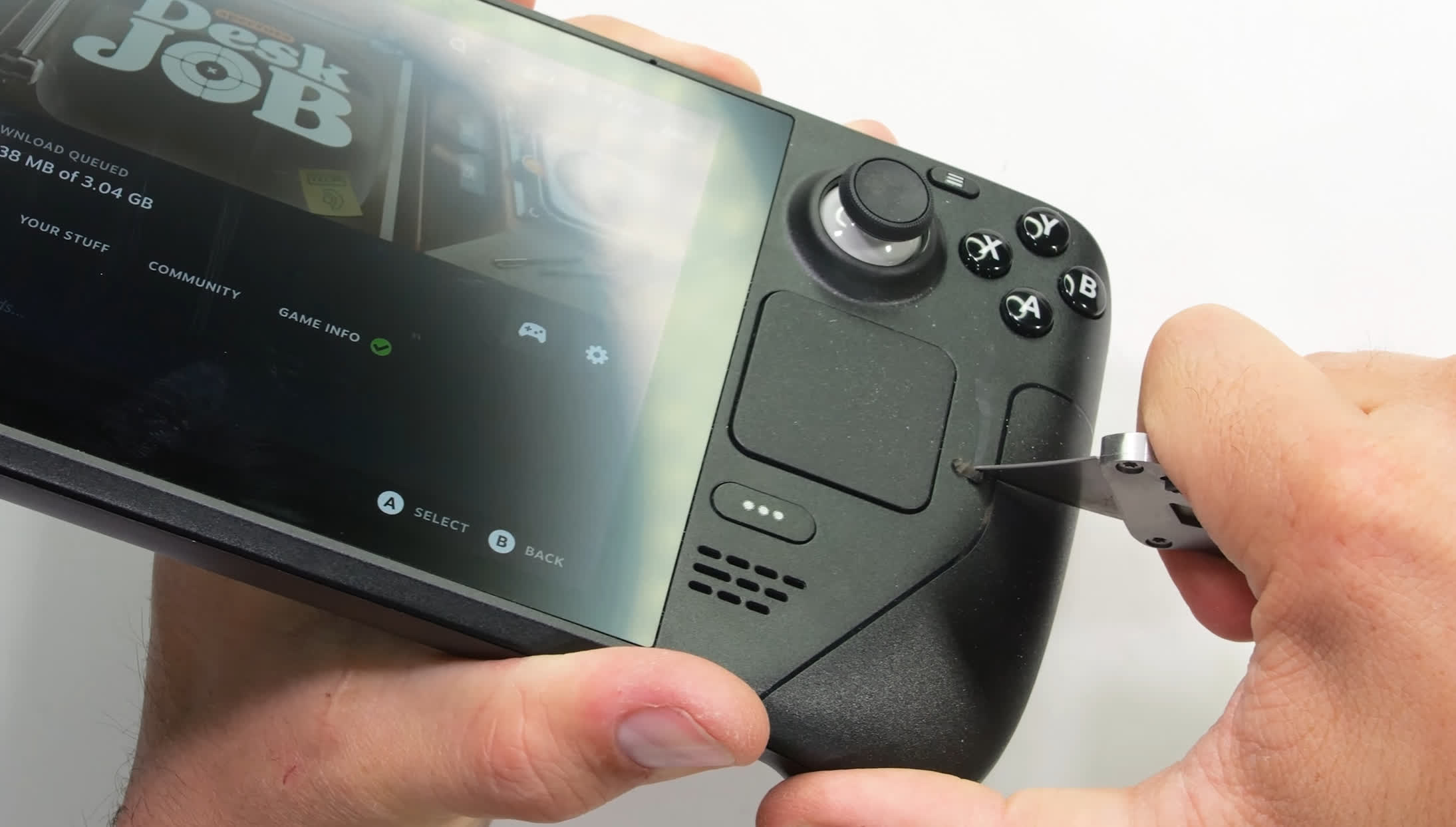What just happened? We're used to seeing YouTube channel JerryRigEverything abusing smartphones to discover how durable they are, but creator Zack Nelson tests more than just the latest handsets. Recently, he put the Steam Deck through its paces, and it did pretty well.
Starting with his usual Mohs' hardness test, Nelson notes that the "abrasive" anti-glare coating on the more expensive Steam Deck model makes it harder to remove surface-level damage; he thinks Valve would have been better off using a brighter panel instead of the coating. It left marks from level 2 upwards, though the actual damage only occurs at level 6, which is about the same as most smartphones. The cheaper Steam Deck without the anti-glare coating didn't have this issue.

Nelson then takes a blade to the handheld, noting that it should hold up pretty well to long-term use. And as with other IPS screens, the display is able to shrug off the flame test after it initially appears to suffer damage.
Finally comes the bend test. This has long been a good indicator of how well a piece of tech will fare should you accidentally sit on it. The new iPad Pro and Samsung Galaxy Tab S8 Ultra are a couple of devices that survived well, whereas the OnePlus 10 Pro snapped in two.
The good news is that the Steam Deck can withstand a lot of pressure. It doesn't break or crack and hardly creaks as Nelson tries to rip it in half from both the front and the back.
Ultimately, this was a pretty good showing by the Steam Deck, which is definitely what you want in something designed to be played on the move and carried around in backpacks.
In related news this month, Valve recently released Steam Deck audio drivers for Windows, and an update added per-game performance settings.